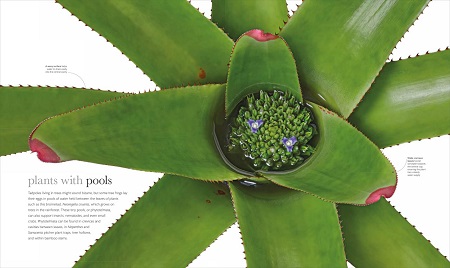Strange and Stunning: 5 Beautifully Unusual Flowers and Plants
Sometimes nature is stranger than fiction! We’re venturing beyond sunflowers and tulips and exploring the world of some truly unusual flowers and plants. Featured in DK's book Flora, these extraordinary examples have clever ways to thrive and survive.

Including rotting meat mimicry, hot-pink stamens, and tadpole swimming pools.
Sometimes nature is stranger than fiction! We’re venturing beyond sunflowers and tulips and exploring the world of some truly unusual flowers and plants. Featured in DK's book Flora, these extraordinary examples have clever ways to thrive and survive.

Corpse flower | Rafflesia arnoldii
At 3 feet across and weighing 24 lbs, the corpse flower is the world’s largest single flower. Despite its size, this rare flower is usually smelled before it is seen. Native to the diverse rainforests of Sumatra and Borneo, the plant mimics rotting meat in both fragrance and appearance.
Neoregelia cruenta
Tadpoles living in trees might sound bizarre, but some tree frogs lay their eggs in pools of water held between the leaves of plants such as this bromeliad, Neoregelia cruenta, which grows on trees in the rainforest. These tiny pools, or phytotelmata, can also support insects, nematodes, and even small crabs.
Cibotium glaucum fiddlehead
Developing fern fronds are tightly curled into structures called fiddleheads, which protect the delicate growing tips at their centre. Cibotium glaucum fiddleheads, the largest pictured here, are the size of real violin fiddleheads, but they develop into leaves over 9 feet long.

Shaving brush tree flower | Pseudobombax ellipticum
Bats are the major pollinators of the shaving brush tree, which is native to Mexico and Central America. Each flower on the tree opens for one night and part of the following day only. Hundreds of hot-pink stamens, each about 4 inches long, provide ample pollen to dust any feeding bats.

Devil’s tobacco plant | Lobelia tupa
Hummingbirds home in on red flowers, such as Chile’s devil’s tobacco plant. Multiple inflorescences at the ends of stalks, and nectaries hidden within floral tubes, ensure that only certain birds can reach them – and transfer pollen in the process.
 Flora
Flora
Discover the extraordinary diversity of the plant world--and how plants work--with this photographic celebration of the trees, flowers, and foliage plants that share our planet.
RELATED
ALREADY A SUBSCRIBER? LOG IN
We are currently offering this content for free. Sign up now to activate your personal profile, where you can save articles for future viewing













Add Comment :-
Comment Policy:
Comment should not be empty !!!